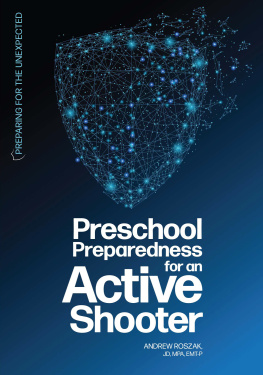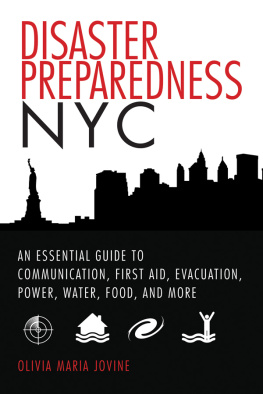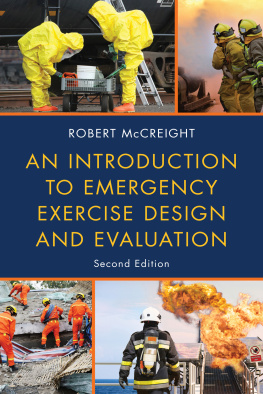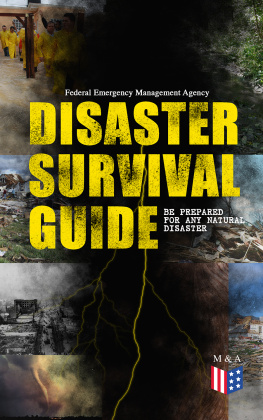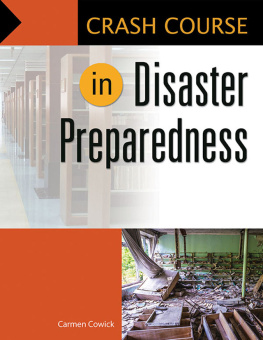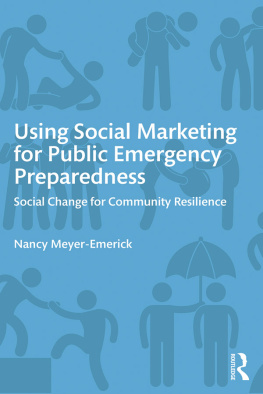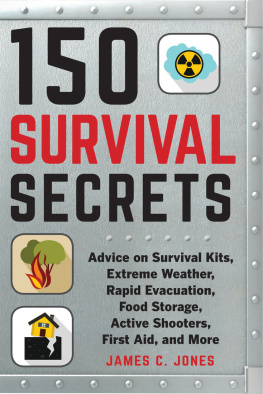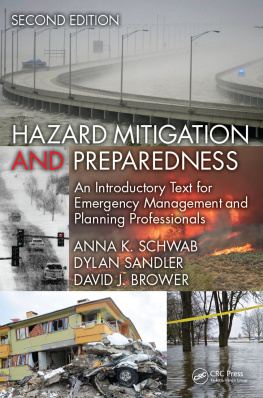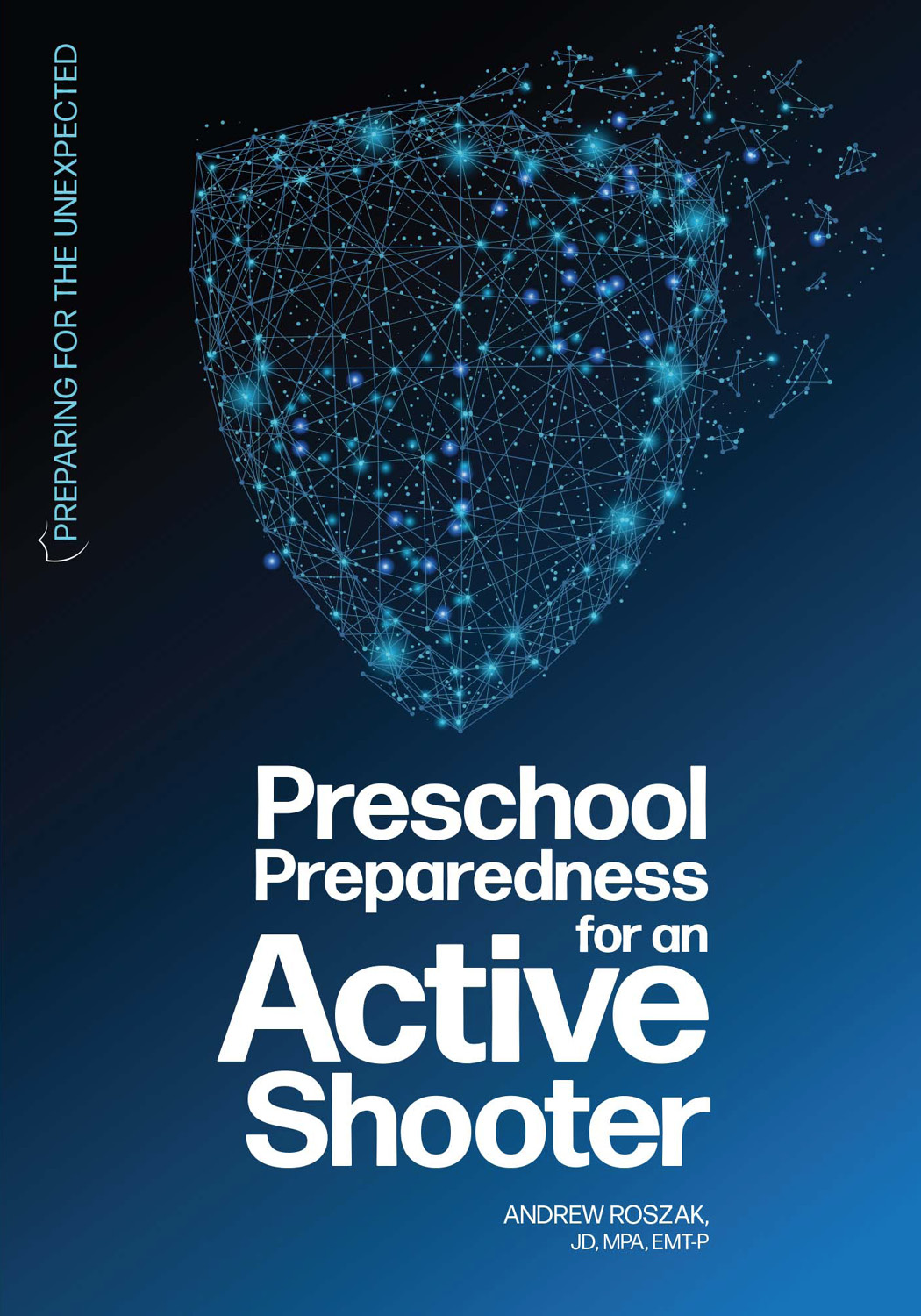Contents
Chapter 1:
Background on the Threat
Chapter 2:
Historical Lessons Learned
Chapter 3:
Applying the Lessons Learned to Early Childhood Facilities
Chapter 4:
Situational Awareness and Creating a Culture
of Safety
Chapter 5:
Taking Action
Chapter 6:
Conducting Drills
Copyright
2020 Andrew Roszak
Published by Gryphon House, Inc.
P. O. Box 10, Lewisville, NC 27023
800.638.0928; 877.638.7576 [fax]
Visit us on the web at www.gryphonhouse.com.
All rights reserved. No part of this publication may be reproduced or transmitted in any form or by any means, electronic or technical, including photocopy, recording, or any information storage or retrieval system, without prior written permission of the publisher. Printed in the United States. Every effort has been made to locate copyright and permission information.
Images used under license from Shutterstock.com and courtesy of the author.
Library of Congress Control Number: 2019950530
Bulk Purchase
Gryphon House books are available for special premiums and sales promotions as well as for fund-raising use. Special editions or book excerpts also can be created to specifications. For details, call 800.638.0928.
Disclaimer
Gryphon House, Inc., cannot be held responsible for damage, mishap, or injury incurred during the use of or because of activities in this book. Appropriate and reasonable caution and adult supervision of children involved in activities and corresponding to the age and capability of each child involved are recommended at all times. Do not leave children unattended at any time. Observe safety and caution at all times.
Acknowledgments
This publication would not be possible without the contributions of numerous individuals. First, we must acknowledge those brave individuals who have lived through the unthinkable. Our thoughts are with them and their families as they continue to recover from these senseless tragedies.
Second, a very special thank you to my father, Ronald Roszak, for his relentless work on this topic. As an award-winning law enforcement veteran with twenty years of service, his insights and contributions offer a unique perspective on this topic. Since day one, his passion for protecting children by empowering early childhood professionals has been awe inspiring. It has truly been a privilege to work alongside my father and travel the country with him to help better prepare individuals and organizations.
Third, I would be remiss if I did not acknowledge the many contributions of Dr. Sara Roszak. Sara has been the best wife, friend, and copyeditor anyone could possibly wish for. Without her support and encouragement, I certainly would not be where I am today.
Fourth, many thanks to Bob and Joyce Plechaty, Ruth Roszak, Amy Roszak, Joan Roszak, Maria Rubin, Dr. Kathy Morgan, and Marty Rubin for their love, inspiration, and encouragement.
Last, but certainly not least, I would like to thank all the early childhood professionals who have contributed to this work and those who are taking the time to read this publication. When I began working in early childhood in 2015, I was unsure what type of reception my work would receiveespecially considering the multitude of competing interests and requirements that merit their time and attention. I have been beyond delighted and impressed that so many have embraced emergency preparedness and have moved beyond just checking the box. Your creativity, imagination, and dedication to keeping children safe is inspirational and is the driving force behind this work. I hope the following pages provide you with context, ideas, and useable solutions. It is an honor to stand beside you and work on these issues together.
Introduction
The Reasons for This Book
In the years leading up to this publication, the United States has endured numerous active-shooter incidents. The uptick in these tragic events has led to increased rules and regulations across states for specific entities, such as public institutions, to plan and train for responding to such scenarios. More recently, several states have enacted or are considering such regulations specifically for early childhood programs.
Recent research by Kendall Leser, Julie Looper-Coats, and Andrew Roszak relates that out of a sample of more than 600 child-care administrators nationwide, only 20 percent reported preparedness as a high-level priority for their child-care business. In this same study, when asked how prepared they were for various emergency situations, less than half of child-care administrators reported being prepared for an active shooter situation, while more than 90 percent reported being prepared for a fire. This finding makes sense given that child-care providers have been required to participate in fire drills for years, but not many providers have been required to prepare for and practice for active-shooter scenarios.
Given these new and proposed regulations requiring shooter/lockdown plans and conducting drills on a regular basisand based on the concerns of early learning professionalsI have created this publication, the first of its kind, specifically tailored for the early learning community. This publication can serve as a starting point or review for early childhood professionals to empower themselves to address difficult and threatening situations.
Early Childhood Education: A Unique Setting
Preparing for an active-shooter scenario seems unimaginable to manyand even more so in the context of early education. At first, the thought of this type of preparation may be uncomfortable. After all, early childhood professionals care for the youngest and most vulnerable population: our children, the next generation. While many businesses, high schools, and universities have been preparing for shooter scenarios for years, the early childhood education community has largely been left out of such efforts. Sadly, this is not uncommon, as early childhood is often overshadowed or completely forgotten. There are many reasons for this, not the least of which is that people believe we are just babysitters.
This could not be further from the truth.
Early childhood is an essential time in a childs life. Not only is the brain developing at an astonishing rate, but vital social, emotional, and sensory skills are being formed, all of which will have life-long impacts. According to the Center on the Developing Child at Harvard University, in children younger than three years, more than a million neural connections per second are being formedmore than at any other time of life. Our shared goal is to provide an environment that is nurturing, caring, healthy, and safe.
The challenge for us is balancing the security needs of our programs against the desire to ensure that our spaces are warm, open, and welcoming. It is not an easy task, especially considering that resources are often scarce in the early childhood setting. We attempt to balance these realities in the following pages, recognizing that child-care professionals are the first educators of emergency preparedness. Child-care providers are a foundational piece of emergency preparednessand the reason why children already know what to do in emergencies when they reach elementary school.
Reading this publication is an important first step in your preparedness journey. The term active shooter is used throughout this publication for simplicity. However, the techniques described can be applied to a wide variety of situations and threats. For some, the term active assailant may be more appropriate. All of us hope that we will never find ourselves in a dangerous situation, especially one with a gunman. However, current realities underscore the importance of learning more about these scenarios and empowering ourselves with knowledge and the skills to prepare.

